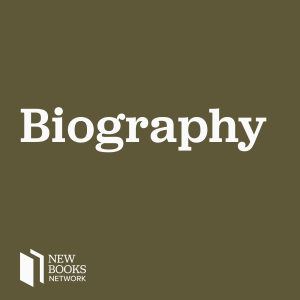
Charlotte Eubanks, "The Art of Persistence: Akamatsu Toshiko and the Visual Cultures of Transwar Japan" (U Hawaii Press, 2019)
 2020-11-16
2020-11-16
The Art of Persistence: Akamatsu Toshiko and the Visual Cultures of Transwar Japan (U Hawaii Press, 2019) examines the relations between art and politics in transwar Japan, exploring these via a microhistory of the artist, memoirist, and activist Akamatsu Toshiko (also known as Maruki Toshi, 1912–2000). Scaling up from the details of Akamatsu’s lived experience, the book addresses major events in modern Japanese history, including colonization and empire, war, the nuclear bombings, and the transwar proletarian movement. More broadly, it outlines an ethical position known as persistence, which occupies the grey area between complicity and resistance: Like resilience, persistence signals a commitment to not disappearing—a fierce act of taking up space but often from a position of privilege, among the classes and people in power. Akamatsu grew up in a settler-colonial family in rural Hokkaido before attending arts college in Tokyo and becoming one of the first women to receive formal training as an oil painter in Japan. She later worked as a governess in the home of a Moscow diplomat and traveled to the Japanese Mandate in Micronesia before returning home to write and illustrate children’s books set in the Pacific. She married the surrealist poet and painter Maruki Iri (1901–1995), and together in 1948—and in defiance of Occupation censorship—they began creating and exhibiting the Nuclear Series, some of the most influential and powerful artwork depicting the aftermath of the Hiroshima bombing. For the next forty or more years, the couple toured the world to protest war and nuclear proliferation and were nominated for the Nobel Peace Prize in 1995.
With abundant excerpts and drawings from Akamatsu’s journals and sketchbooks, The Art of Persistence offers a bridge between scholarship on imperial Japan and postwar memory cultures, arguing for the importance of each individual’s historical agency. While uncovering the longue durée of Japan’s visual cultures of war, it charts the development of the national(ist) “literature for little citizens” movement and Japan’s postwar reorientation toward global multiculturalism. Finally, the work proposes ways to enlist artwork generally, and the museum specifically, as a site of ethical engagement.
Charlotte Eubanks is associate professor of comparative literature, Japanese and Asian Studies at the Pennsylvania State University. She studies the material culture of books and word/image relations, with a focus on Japanese literature from the medieval period to the present. Her articles have appeared in Ars Orientalis, Book History, Harvard Journal of Asiatic Studies, Japanese Journal of Religious Studies, PMLA, Symposium, Word &Image, and a range of other venues. She is associate editor at the journal Verge: Studies in Global Asias.
Learn more about your ad choices. Visit megaphone.fm/adchoices
Support our show by becoming a premium member! https://newbooksnetwork.supportingcast.fm/biography
More Episodes
Create your
podcast in
minutes
- Full-featured podcast site
- Unlimited storage and bandwidth
- Comprehensive podcast stats
- Distribute to Apple Podcasts, Spotify, and more
- Make money with your podcast
It is Free
- Privacy Policy
- Cookie Policy
- Terms of Use
- Consent Preferences
- Copyright © 2015-2024 Podbean.com





